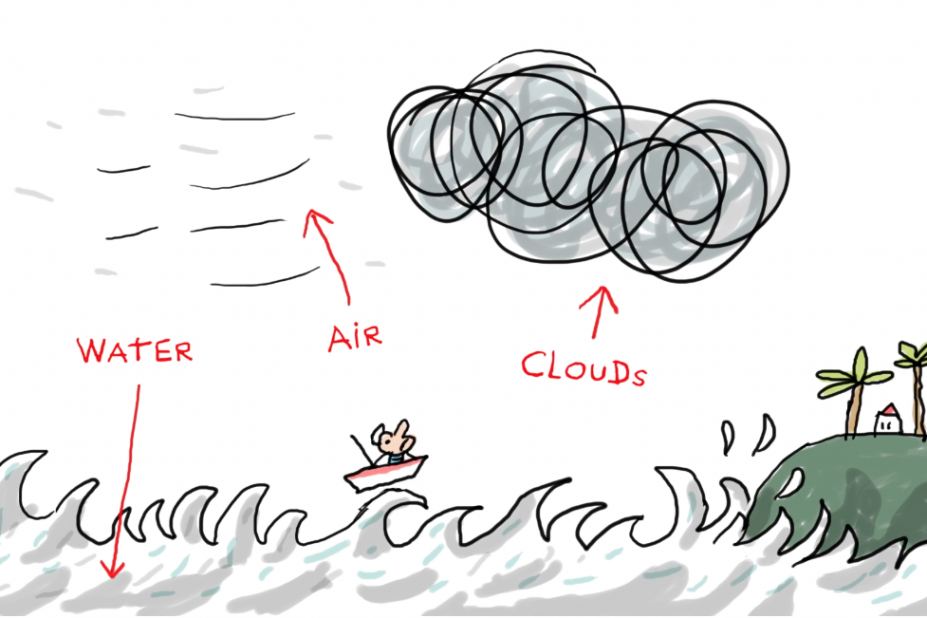Hurricanes are formed by a sequence of phenomena involving water, air and clouds.
In these intense circular storms, there are powerful winds and torrential rainfall.
Meteorologists call them tropical cyclones. They are called hurricanes in the Atlantic Ocean and typhoons in the North Western Pacific.
These violent climatic phenomena always form over warm tropical oceans.
But how do they develop?
How a hurricane actually starts is quite a mystery.
First, a small movement of air disturbance is created. Some say the flutter of a butterfly’s wings is enough!
Next, warm air rises and cold air takes its place.
Clouds are formed, gradually rolling around the eye of the cyclone, swirling quicker and quicker.
A hurricane draws up warm water from the ocean, which is transformed into water vapour before becoming heavy rains when it hits the coast.
Above land, the air is cooler. So the wind slows down, the rain eases off… The storm is over.
But just look at the damage: buildings destroyed, floods, roads submerged, people injured or even dead.
Scientists monitor the formation of hurricanes. To warn people about them, they give them names. Do you know any?





 Retour
Retour